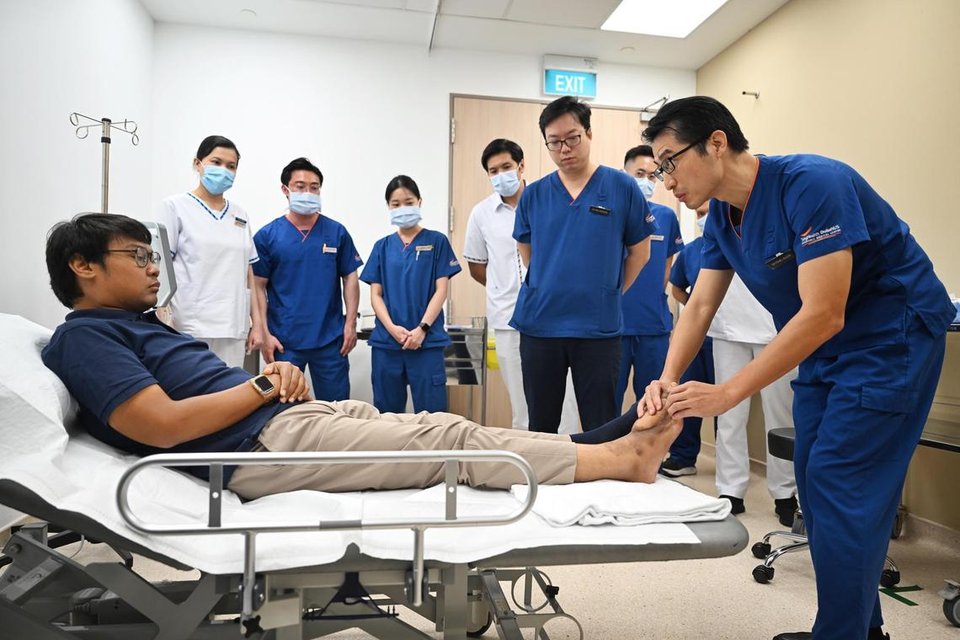The Life List: Tips on lifting weights safely for seniors

Published on
17 Jan 2023
Published by
The Straits Times
SINGAPORE – Strength training has plenty of benefits for seniors. It helps prevent osteoporosis by stimulating muscle and bone growth, combats weakness and reduces the risk of falls, among other gains. But there are many factors to consider before starting to train with weights, say fitness experts.
Take into account medical conditions
Ms Wendy Cho, a master fitness trainer at True Fitness, says: “Naturally, due to age, seniors may have medical conditions. Hence, it is recommended that they get clearance from a physician before starting any form of strength training.”
Mr John Cheah, who heads coach development at Level Gym, says seniors need to take into consideration any heart or lung conditions they might have. “A big part of lifting weights involves the way an individual connects his or her breath to his or her movement. It’s not to say that if you have these conditions, you can’t start lifting, but more attention needs to be brought into the training session.”
Keep your trainer informed
Mr Cheah also highlights the importance of sharing one’s background and circumstances with the trainer before starting a workout.
“If a senior has a sprain or lack of mobility or had surgery before, modifications to the fitness plan should be made to increase the efficacy and safety of the session,” he says.
For instance, if a person cannot touch his or her toes due to tight hamstrings and calves or a past injury, it would be advisable to gradually ease the individual into the movement with the help of a foam roller or trigger ball, which can relieve muscle tightness, he notes.
Breathing properly is key
Dr Shannon Chia, team lead at Sport Singapore’s Active Health division, says it is crucial to breathe correctly. This means exhaling when lifting, pushing or pulling, as opposed to holding one’s breath, especially for seniors with hypertension, as doing so will cause a spike in blood pressure.
“Not only does proper breathing support the exertion of the exercise and allow for better control of movement, but it also prevents injuries such as hernia or dizziness due to lack of oxygen to the brain,” she adds.
Start slow and go slow
Dr Chia says a general guide is to start with bodyweight exercises before progressing to using a light resistance band.
Resistance bands, she notes, are not reliant on gravity and therefore reduce joint compression. They are an effective and safer alternative to free weights, although both are convenient aids that can be used at home.
Free weights involve more muscles and greater stability and balance, and are best used under supervision, especially for seniors without exercise experience, she adds.
A person’s susceptibility to injury during weight training depends more on the way the training programme is carried out and less on how old they are, says Mr Cheah.
Seniors should avoid sessions revolving around fast-moving, time-based workouts when they begin training and instead look to steadily increase volume and range of mobility through thoughtful movement, he advises.
“Anyone starting to exercise should not jump into intense levels of activity as it can increase risk of injury, so it is important to start slow,” he says.
Warm up and cool down
Incorporating five to 10 minutes of warm-up and cool-down before and after exercising is also vital to prevent injury.
“The warm-up increases body and muscle temperature and gradually prepares the heart and lungs for exercise, while the cool-down helps with the gradual recovery of heart rate and blood pressure to prevent any adverse effects that might be associated with the sudden stoppage of activity,” says Dr Chia.
Never too late to start
The best part about weight training is that it is never too late to start, say fitness trainers.
“We see seniors over the age of 60 come in for training sessions and, over time, they get stronger, more flexible and happier because the best way to age is gracefully, and with a decent amount of strength,” says Mr Cheah.
Source: The Straits Times © Singapore Press Holdings Limited. Reproduced with permission.
ALL views, content, information and/or materials expressed / presented by any third party apart from Council For Third Age, belong strictly to such third party. Any such third party views, content, information and/or materials provided herein are for convenience and/or general information purposes only. Council For Third Age shall not be responsible nor liable for any injury, loss or damage whatsoever arising directly or indirectly howsoever in connection with or as a result of any person accessing or acting on any such views, content, information and/or materials. Such third party views, content, information and/or materials do not imply and shall not be construed as a representation, warranty, endorsement and/or verification by Council For Third Age in respect of such views, content, information and/or materials.







